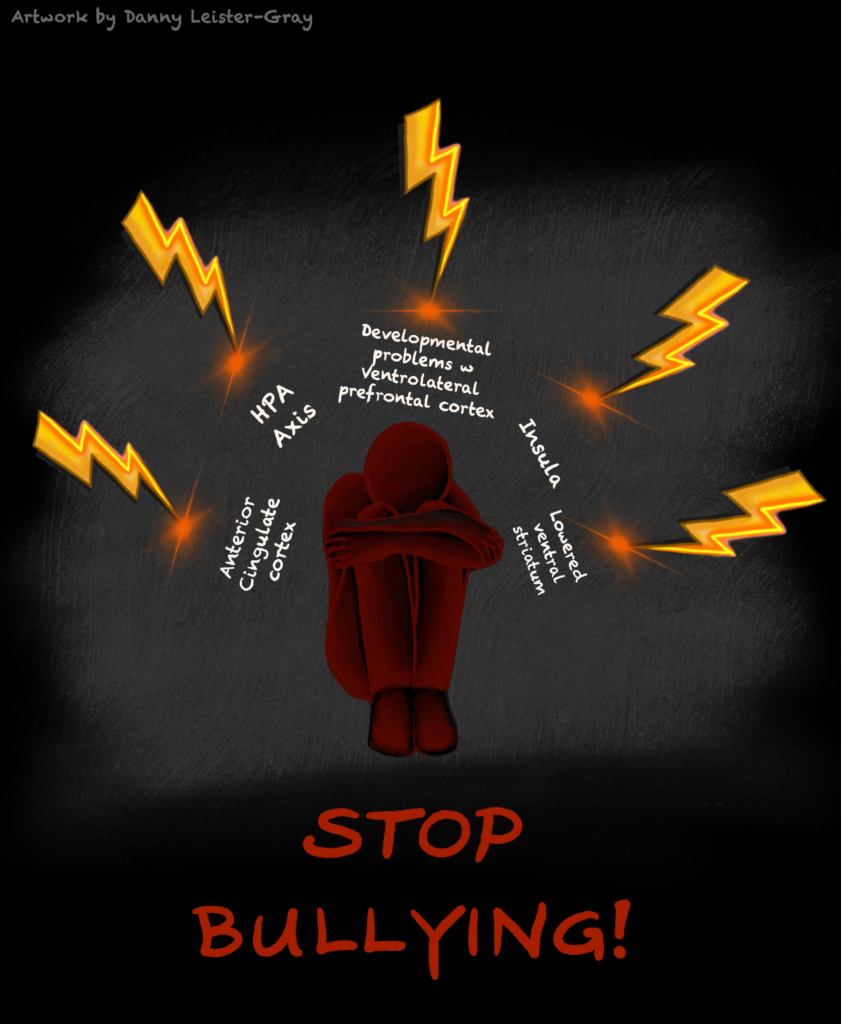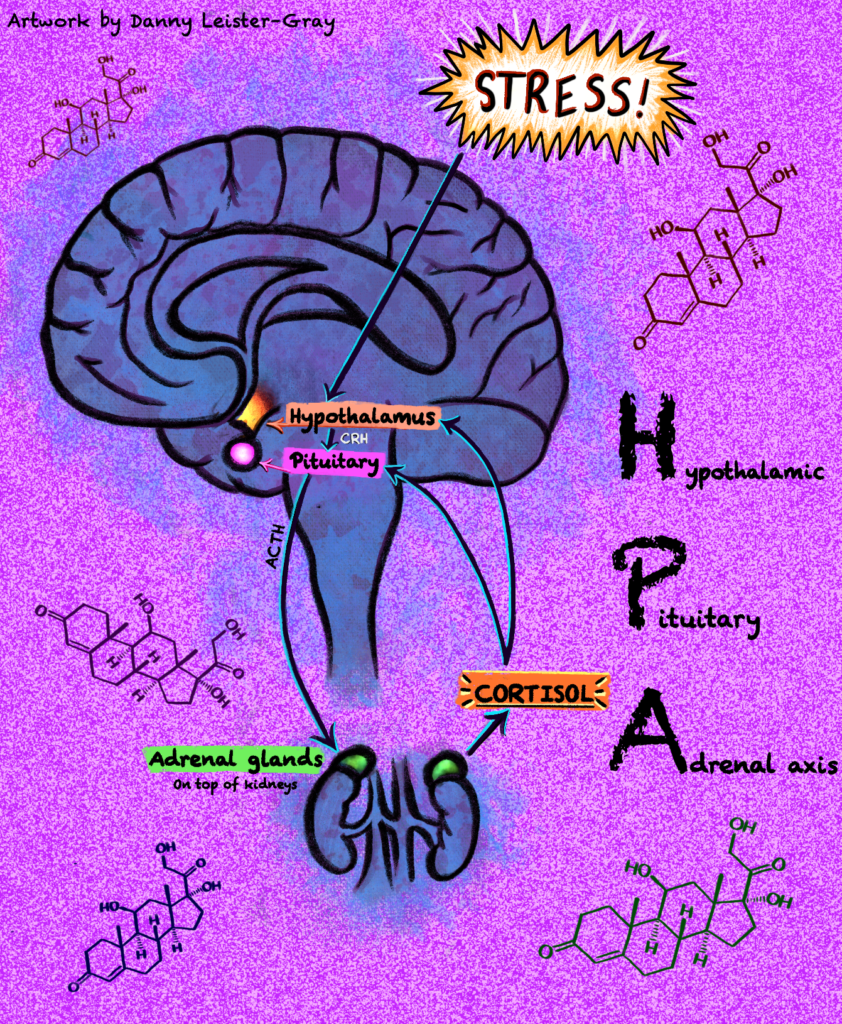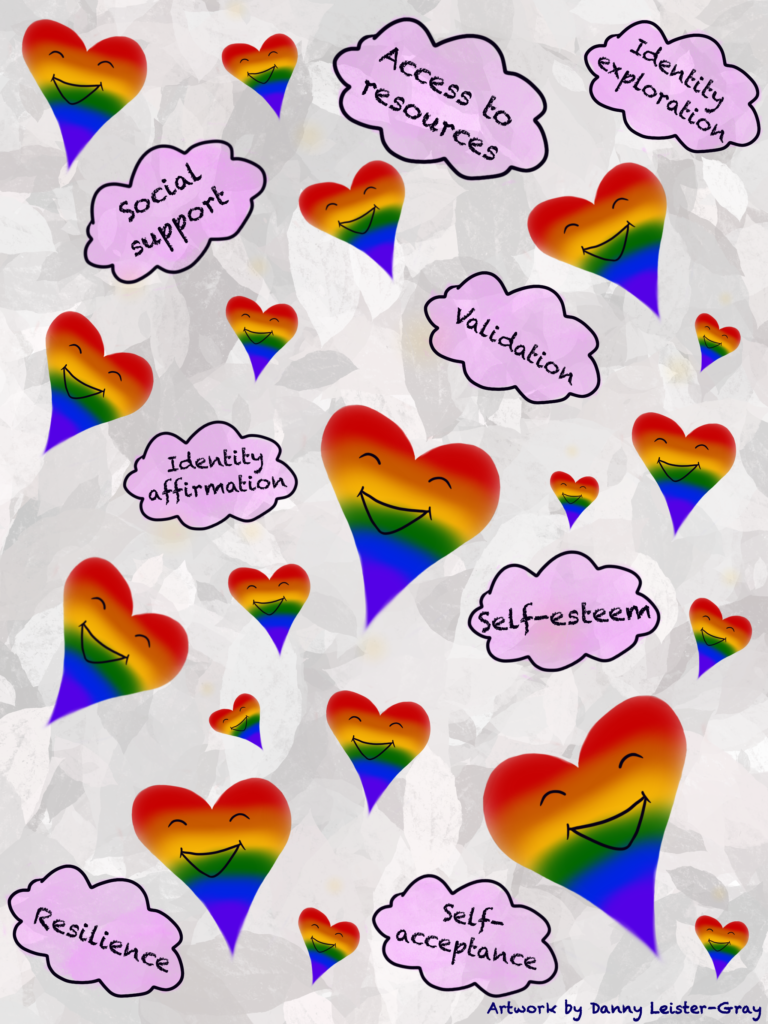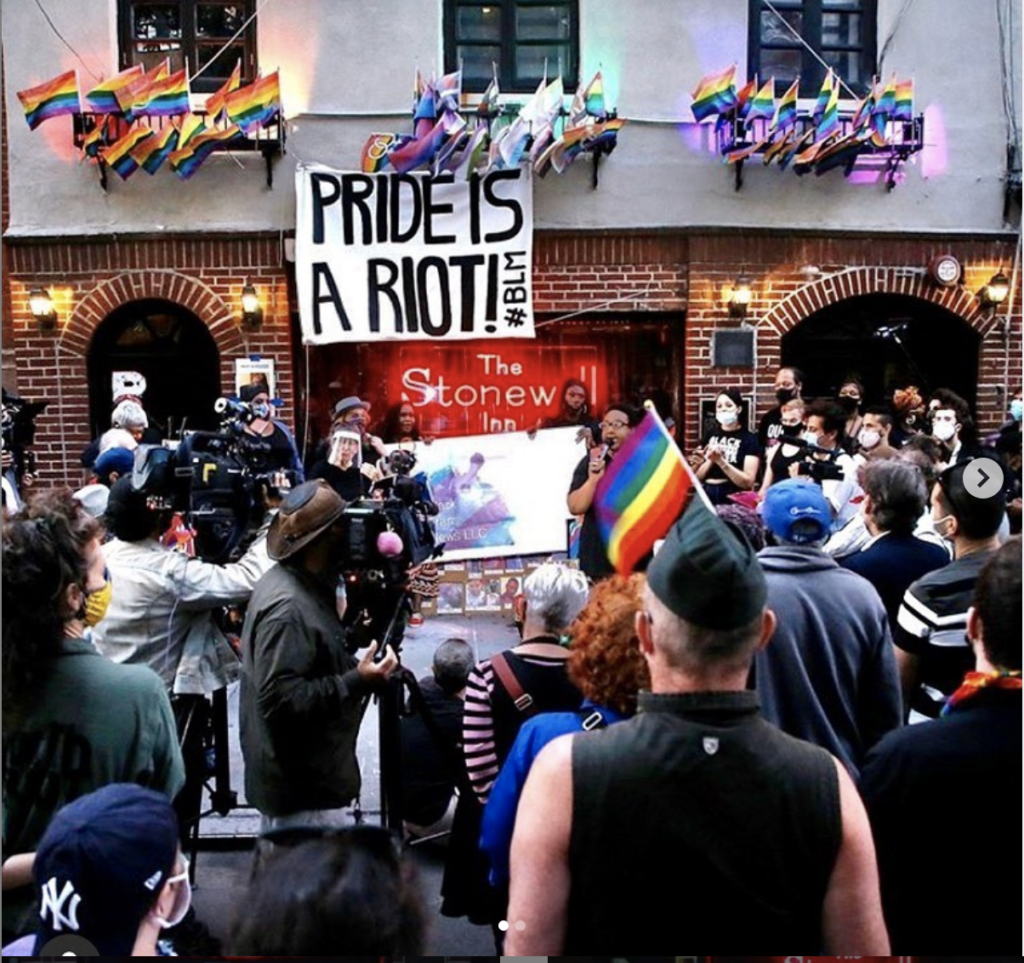Post by Danny Leister-Gray, Psychology & Honors College, Portland State University
“History isn’t something you look back at and say it was inevitable, it happens because people make decisions that are sometimes very impulsive and of the moment, but those moments are cumulative realities.” — Marsha P. Johnson
2020: A Year of Crisis
For many Americans, a summary of 2020 may look like this: the eruption of a deadly pandemic, during a presidential re-election year amidst a highly controversial Trump administration and widespread civil unrest against racial injustice. Needless to say, the events that occurred in 2020 will go down in American history.
LEARN MORE: Bystander Videos of George Floyd and Others Are Policing the Police
LEARN MORE: Black Lives Matter, and Yes, You are Racist: The Parallelism of the Twentieth and Twenty-First Centuries.
LEARN MORE: What We Know About the Death of George Floyd in Minneapolis
In particular, the ongoing COVID-19 pandemic impacted every person in some way. By the end of 2020, 330,000 Americans died due to the virus, and the global death toll neared two million. By October, COVID-19 was the third leading cause of death in the US for people between the ages of 45 and 84, and the second leading cause of death for those 85 and older.

LEARN MORE: Covid Death Toll Over 2 Million Worldwide
LEARN MORE: Provisional Death Counts for Coronavirus Disease 2019 (COVID-19)
LEARN MORE: COVID-19 as the Leading Cause of Death in the United States
Could COVID-19 Health Risks be Higher for LGBTQ Communities?
Some experts and advocates fear that the virus could disproportionately impact LGBTQ communities, due to a variety of health risks. Compared to heterosexual, cisgender (non-transgender) Americans, LGBTQ individuals experience higher rates of physical health problems — including immune dysfunction and respiratory dysfunction. LGBTQ folks also frequently report a lack of healthcare insurance, discrimination in healthcare, and avoidance of healthcare visits. To make matters worse, they’re more likely to have jobs that either put them at higher risk of exposure to the virus, or jobs that are impacted by the virus.
LEARN MORE: The Relationship Between Minority Stress and Biological Outcomes: A Systematic Review
LEARN MORE: Discrimination in the United States: Experiences of Lesbian, Gay, Bisexual, Transgender and Queer Americans
How Else Might COVID-19 Impact LGBTQ Communities?
The pandemic has also put LGBTQ communities at increased risk for psychological and psychosocial problems. While many individuals have felt isolated during the pandemic, the risks of psychosocial isolation are even more dramatic for LGBTQ individuals, who already experience family rejection, parental abuse, feelings of isolation, higher rates of mental health problems, and in turn, suicide attempts. For LGBTQ communities, isolation could mean the loss of crucial resources that support well-being and counter the negative impacts of family rejection.
LEARN MORE: Implications of COVID-19 for LGBTQ Youth Mental Health and Suicide Prevention.
LEARN MORE: Coronavirus Pandemic a Perfect Storm for LGBTQ Homeless Youth
Politically conservative Administrations Add Insult to Injury
Politically conservative administrations add insult to injury — it’s a highly unfortunate reality, supported by data. Mental health and well-being is notably impacted in LGBTQ folks who live in conservative environments. While anti-LGBTQ policies play a significant role in damaging quality of life, even the mere exposure to daily anti-LGBTQ campaign messages can cause long-term impacts.
LEARN MORE: Politicians Don’t Get to Use ‘Science’ to Oppose the Equality Act
Trump’s administration was supported by political and religious conservatives, and initiated numerous blatant attacks on LGBTQ rights between 2016-2020. While anti-LGBTQ attitudes manifested in multiple forms, perhaps the most terrifying attack — given the context of a deadly pandemic — targeted the removal of transgender and LGBTQ healthcare protections.

LEARN MORE (only the abstract is available to the public): Increase in GLBTQ Minority Stress Following the 2016 US Presidential Election
LEARN MORE: Antitransgender Political Backlash Threatens Health and Access to Care
LEARN MORE: Thomas and Alito Attack Same-Sex Marriage Ruling with Court in Flux
LEARN MORE: HUD Rule Would Cut Protections for Homeless Transgender People
LEARN MORE: The Trump Administration’s Latest Attack on Transgender People Facing Homelessness
LEARN MORE: Transgender Health Protections Reversed by Trump Administration
LEARN MORE: Postelection Distress and Resiliency in LGBTQ Communities
LEARN MORE: Post-election Survey of Youth – Human Rights Campaign
Minority Stress: A Scientifically Supported Phenomenon
“Minority stress” — in this case, sexual and gender minority (SGM) stress — refers to the unique, chronic stress experienced by stigmatized people. Stigma, prejudice, anti-LGBTQ violence and discrimination can create stressful environments for SGM, leading to increased rates of mental health problems (and even physical health problems).

LEARN MORE: How Does Sexual Minority Stigma “Get Under the Skin”? A Psychological Mediation Framework
In fact, neuroendocrinology research supports this idea! The HPA axis is a complex set of neurohormonal processes that lead to the secretion of a crucial stress hormone called cortisol. Evidence suggests that prolonged exposure to SGM stressors can cause HPA axis dysregulation, and in turn, cortisol dysregulation.

LEARN MORE: Stigma and Diurnal Cortisol Among Transitioning Transgender Men
Data also shows that LGBTQ folks report higher rates of mental health problems (anxiety and mood disorders, emotion dysregulation, suicidality, non-suicidal self-injury, and substance use/abuse), and physical health problems (including asthma, weakened immune function, and other health problems). This is quite potentially due to minority stress.

LEARN MORE: Transgender Stigma and Health: A Critical Review of Stigma Determinants, Mechanisms, and Interventions
Sticks & Stones May Break My Bones… But Words Have an Impact, Too
While minority stress is unique to stigmatized people, peer rejection and peer victimization (such as social exclusion and bullying) can actually impact brain activity across all groups! Social exclusion and bullying can alter the activity of the HPA axis and cortisol levels, in addition to limbic/paralimbic areas involved in emotional processing and regulation (insula; anterior cingulate cortex; ventral striatum). Social exclusion and bullying can also cause problems with brain development in the ventrolateral prefrontal cortical area, and physical health problems.

LEARN MORE (only the abstract is available to the public): Worse Than Sticks and Stones? Bullying is Associated With Altered HPA Axis Functioning and Poorer Health
LEARN MORE (only the abstract is available to the public): Peer Rejection and HPA Activity in Middle Childhood: Friendship Makes a Difference
LEARN MORE: Neural Correlates of Social Exclusion During Adolescence: Understanding the Distress of Peer Rejection
The Facts are Bleak… But There is Strength in Community!!
The point of this post is not to imply that LGBTQ folks are doomed for a poorer quality of life.
In general, social connection has positive impacts for everyone. Social connection may help reduce brain activity in regions typically active during peer rejection (dorsal anterior cingulate cortex; anterior insula), and positive social interactions in teenagers may lead to long-term declines in risk-taking behaviors.

LEARN MORE: Time Spent With Friends in Adolescence Relates to Less Neural Sensitivity to Later Peer Rejection
LEARN MORE: Ventral Striatum Activation to Prosocial Rewards Predicts Longitudinal Declines in Adolescent Risk Taking
For LGBTQ folks, community connection can help protect against the impacts of minority stress. Feeling connected to the broader LGBTQ community can increase self-esteem, self-acceptance, validation, resilience, social support networks, and more. It can even lower the risk of suicide.

LEARN MORE: Stigma, Mental Health, and Resilience in an Online Sample of the US transgender Population
LEARN MORE: Resilience in Community: A Social Ecological Development Model for Young Adult Sexual Minority Women
Social Media Isn’t All Bad
Social media tends to get a bad rap, especially when referencing how youth use social media sites. However, evidence suggests that LGBTQ youth may utilize social media in different ways than heterosexual/cisgender youth… and in doing so, it may even help protect against depression and suicidality. This is because LGBTQ youth may use internet spaces for LGBTQ-related socialization, identity exploration, activism, and discovery of resources and opportunities.
LEARN MORE: The Internet for Empowerment of Minority and Marginalized Users
LEARN MORE: Out Online: The Experiences of LGBT Youth on the Internet
LEARN MORE: Peer-to-peer Support Responses to LGBT Suicidal Ideations in an Online Community
Another Way to Connect: Music!
Music has substantial benefits for social connection and mood regulation. Music seems to increase oxytocin release — more affectionately known as the “cuddle hormone” — and regulate the HPA axis. This means music may decrease cortisol activity, or prevent increases in cortisol immediately after a stressful event. This explains why music can help us when we’re in a bad mood, and it’s also an incredible tool for social bonding.

LEARN MORE (only the abstract is available to the public): The Neurochemistry of Music
LEARN MORE (only the abstract is available to the public): Is Music an Evolutionary Adaptation?
LEARN MORE: Towards a Neural Basis of Music-Evoked Emotions
LEARN MORE: The Psychological Functions of Music Listening
LEARN MORE: Music and Social Bonding: “Self Other” Merging and Neurohormonal Mechanisms
LEARN MORE: Music Strengthens Prosocial Effects of Interpersonal Synchronization – If You Move in Time With the Beat
LEARN MORE: The Effect of Music on the Production of Neurotransmitters, Hormones, Cytokine, and Peptides: A Review
LEARN MORE: The Effect of Music on the Human Stress Response
LEARN MORE: Effects of Relaxing Music on Salivary Cortisol Level After Psychological Stress
Activism Ties it All Together
Activism has always been well, alive, and valued in LGBTQ communities. This was what launched the iconic 1969 Stonewall Uprising, which led to the gay rights movement and annual LGBTQ Pride celebrations.
LEARN MORE: The Riot That Changed America’s Gay Rights Movement Forever
LEARN MORE: What’s Good About Being Gay?: Perspectives from Youth
LEARN MORE: Stressor and Resilience Factors for Lesbian, Gay Men, and Bisexuals Confronting Antigay Politics
An incredibly crucial way to support activism today is by recognizing the deeply ingrained existence of racial injustice — including problems documented within LGBTQ communities. The fact of the matter is that not all segments of the LGBTQ community can benefit equally from community resources. LGBTQ-BIPOC face additional obstacles that white LGBTQ folk will never experience, and racism/racial exclusion also persists in LGBTQ communities.
About Marsha P. Johnson (MPJ Institute
LEARN MORE: Sylvia Rivera’s Talk at LGMNY, June 2001
LEARN MORE: Resilience in the Study of Minority Stress and Health of Sexual and Gender Minorities
LEARN MORE: Measuring Multiple Minority Stress: The LGBT People of Color Microaggressions Scale
LEARN MORE: Measuring Community Connectedness Among Diverse Sexual Minority Populations
LEARN MORE (only the abstract is available to the public): Their Own Received Them Not: Black LGBT Feelings of Connectedness
LEARN MORE: Advancing Research on Structural Stigma and Sexual Orientation Disparities in Mental Health Among Youth

As a result, LGBTQ communities began to find ways to rise to the challenges of 2020 by explicitly advocating for Black Lives Matter and LGBTQ-BIPOC, all the while incorporating music and internet spaces to provide solidarity.
Activism, Internet, and Music — A Tale of Resilience
LGBTQ communities consistently used activism, internet, and music to celebrate Pride, embody resilience, and provide solidarity.
LEARN MORE: Queer Liberation March for Black Lives: Pride Goes Back to its Protest Roots
LEARN MORE: Challenged by COVID-19, LGBTQ Communities Plan Digital Pride Celebrations
LEARN MORE: Portland Pride 2020 Goes Virtual to Celebrate Community
Queer Liberation March for Black Lives
Queer Liberation March for Black Lives & Against Police Brutality
Louisville Pride Foundation (Facebook)
Stonewall Inn Gives Back Initiative
Get involved!
LGBTQ communities took crucial first steps to address racial injustice in 2020, but these efforts must maintain and strengthen over time. Please explore and share the list of resources below.
Black Lives Matter/BIPOC Allies:
- 75 Things White People Can Do for Racial Justice
- Anti-Racism Project (includes events, resources, books, articles)
- Black Lives Matter – Resources for Allies
Resources for LGBTQ-BIPOC:
- Call Blackline: 1 (800) 604-5841
- Crisis Line for Racial Equity Support 503-575-3764
- Mental Health for Queer and Transgender Communities of Color
- Center for Black Equity
- The National Black Justice Coalition
- BTFA Collective
Organizations to follow:
- Audre Lorde Project
- Black Lives Matter
- Black Women’s Blueprint
- Color of Change
- Colorlines
- Equal Justice Initiative
- Showing up for racial justice (SURJ)
Donate:
- BTFA Collective
- The Okra Project
- Emergency Release Fund
- Black Lives Matter
- Marsha P Johnson Institute
- Transgender Law Center
- LGBTQ Freedom Fund
- INCITE!
- The National Black Justice Coalition
- The Trevor Project
LGBTQ Resources:
- (Portland) Sexual and Gender Minority Youth Resource Center (SMYRC)
- The Gay, Lesbian, Bisexual and Transgender National Hotline: (888) 843-4564
- Trans Lifeline: (877) 565-8860
- The Trevor Project Hotline Number (youth): (866) 488-7386
- GLBT Near Me
- Lambda Legal
- Point of Pride (trans support)
- Trevor Space (youth)
Portland Non-Emergency Number: 503-823-3333
- For reporting issues or crimes that are not an immediate threat to life (i.e., theft, assault where the assailant is no longer present and medical care isn’t needed, loud neighbors, etc.). Police do not usually show up for these calls.




